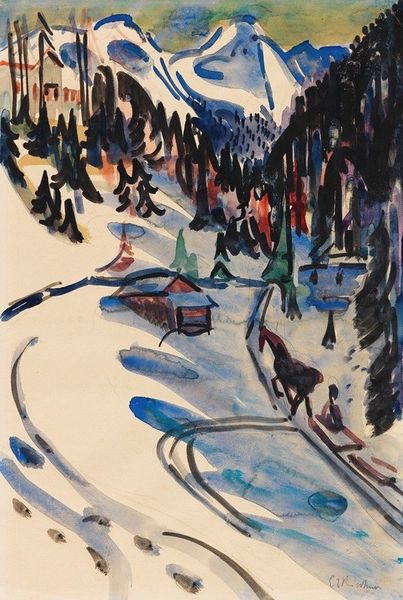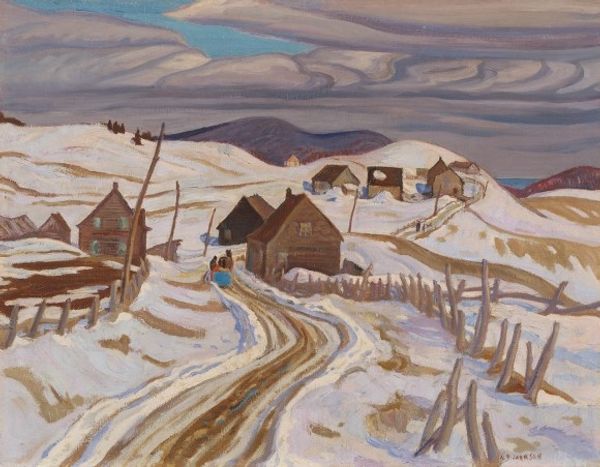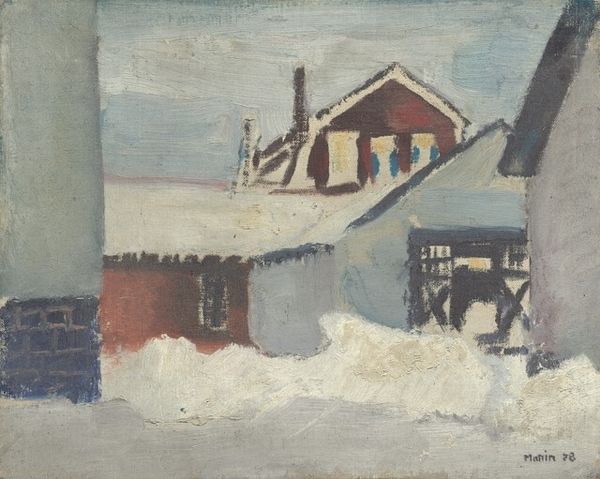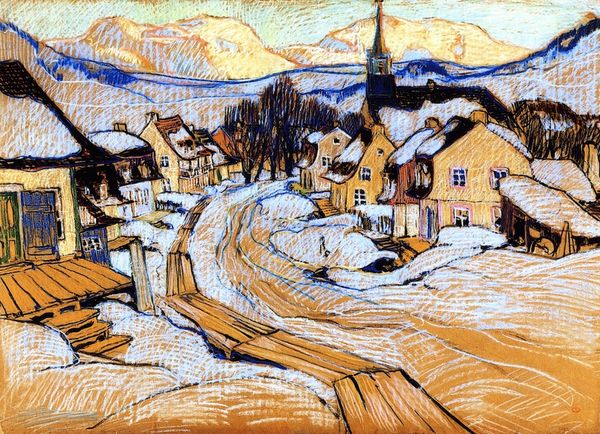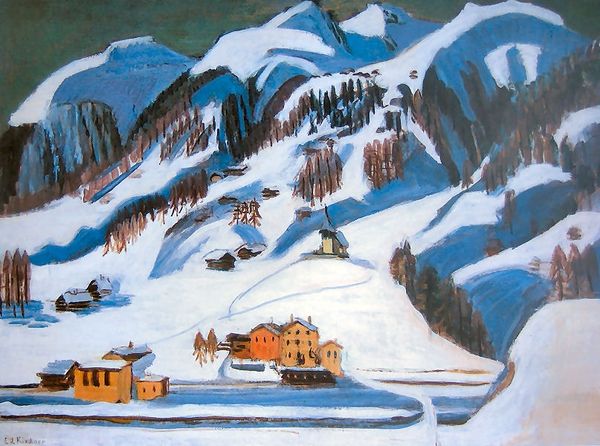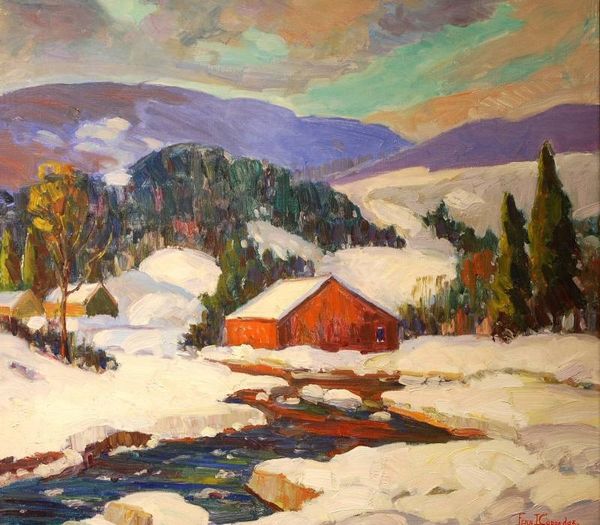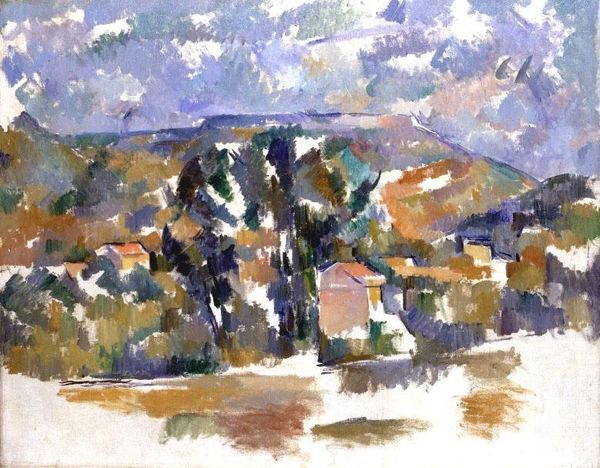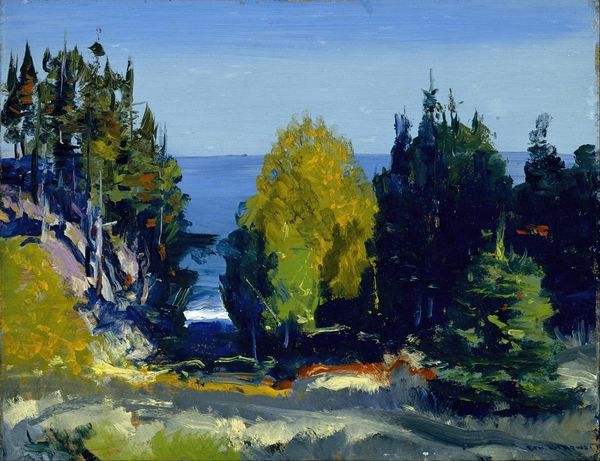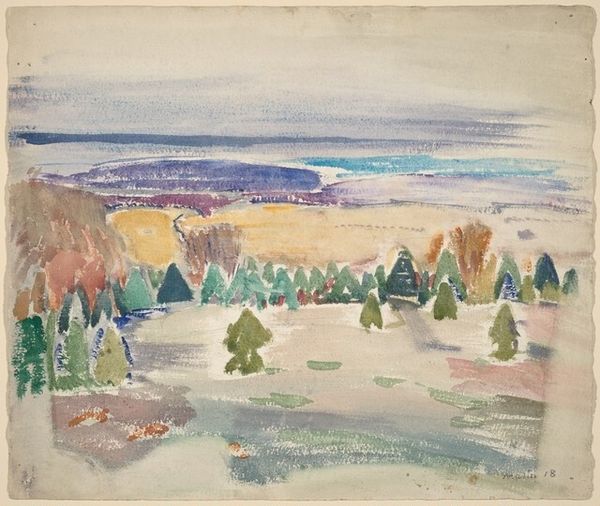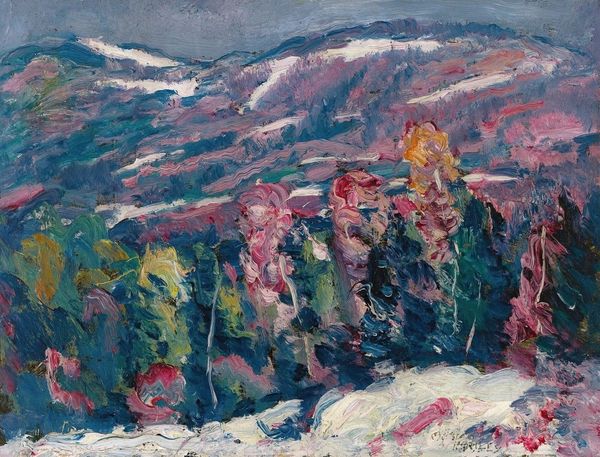
Copyright: Public domain US
Editor: Sallinen Tyko’s “Vådö,” painted in 1917, uses oil on canvas to capture a landscape with expressive brushstrokes. There's almost a childlike quality to the application of paint. How does this contribute to the overall understanding of the artwork? Curator: Well, considering the painting emerged during a tumultuous time, amidst World War I and growing social unrest in Europe, the simplified forms and bold colors suggest a yearning for a more elemental connection to nature. How might this piece reflect Finland's search for its own cultural identity? Editor: That’s interesting. I hadn’t thought of the political undertones. I was too busy admiring the abstract qualities. It feels less about an exact place and more about a feeling of place. Curator: Precisely! And it's crucial to consider the institutional context. Expressionism, with its emphasis on subjective experience, challenged academic traditions. This painting was, in a sense, making a political statement by simply existing, wouldn't you say? How do you think contemporary audiences might have received this departure from realism? Editor: I imagine it was quite a shock! But maybe a welcome one, a break from the bleak realities of the time. Curator: Indeed. This boldness signaled a shift in the role of the artist and art itself. It was no longer just about representation; it was about social commentary. Food for thought, right? Editor: Definitely! I am viewing the painting in a totally different light now. Thank you. Curator: My pleasure. Hopefully, others also get a different reading and new understandings.
Comments
No comments
Be the first to comment and join the conversation on the ultimate creative platform.


